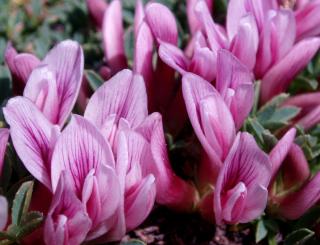Dwarf Clover (Trifolium nanum)

By Charlie McDonald
There are 95 species of clover in the United States and dwarf clover is the runt of the bunch. But, this plant justifies its small stature with where it manages to grow. Dwarf clover is at home on mountain tops in the Rocky Mountains from Montana to northern New Mexico. It is often found at elevations above 11,000 feet, living in the seemingly barren alpine tundra above the elevation where trees will grow.
Harsh growing conditions characterize the alpine tundra environment. Winters have long periods of sub-zero temperatures, blizzards, and high winds. The summers are short, freezing temperatures are possible at any time, there are harsh drying winds, and the sunlight is intense. The soils tend to be rocky, dry, and nutrient poor.
To survive in the tundra environment, dwarf clover has adopted a growth strategy that is successful for many alpine tundra plants. It grows in ground-hugging mats or sometimes low cushion-like mounds, its small leaves stay compact against the plant’s surface, and its flower buds hide between the leaves until many of them pop out at once to cover the plant with color. The mat or cushion shape helps protect tender parts from frost and high winds, helps retain moisture, and holds in heat.
Like many alpine tundra plants, dwarf clover needs to be seen close-up to appreciate its beauty. But, a summer visit to the alpine tundra is exhilarating and well worth the effort to see alpine clover and its other ground-hugging tundra friends.
For More Information
PLANTS Profile - Trifolium nanum, dwarf clover


